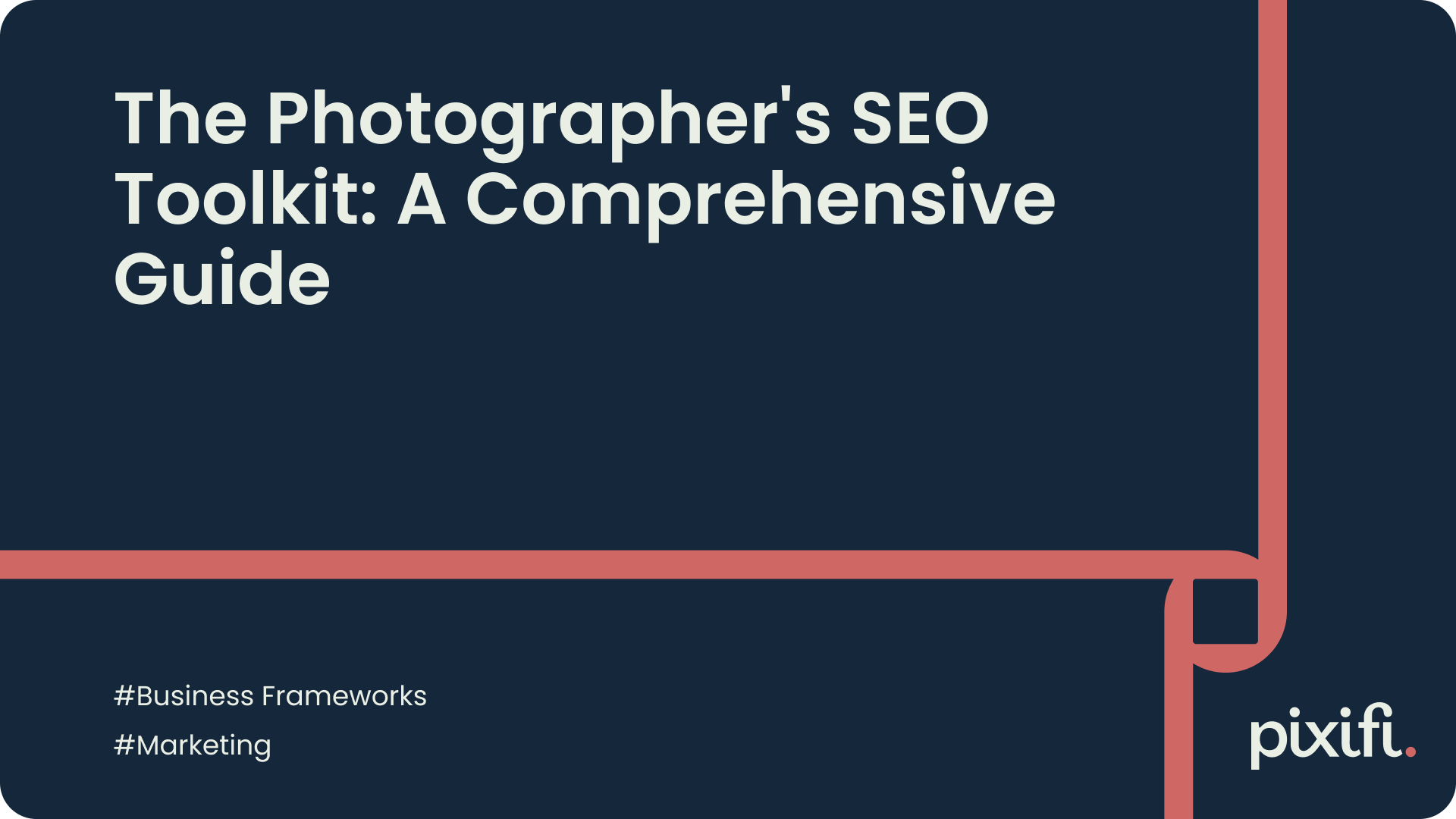Financial Management for Photographers: Keeping Your Business Profitable

In the world of photography, talent and creativity are essential for success. However, as with any business, financial management plays a crucial role in keeping your photography business profitable and sustainable. Understanding financial basics, setting up your business finances, pricing your services, managing expenses, and staying on top of tax considerations are all essential aspects of financial management that every photographer should be familiar with. In this article, we will delve into each of these areas to help you navigate the financial side of your photography business effectively.
Understanding the Basics of Financial Management
Financial management is the process of planning, organizing, controlling, and monitoring the financial resources of a business to achieve its goals. As a photographer, having a solid grasp of financial management ensures that you can make informed decisions about pricing, investments, and growth opportunities. It also helps you keep track of your financial health, enabling you to make adjustments as needed to maintain profitability.
Importance of Financial Management in Photography
Financial management is crucial for photographers because it enables you to measure the profitability of your business and make informed decisions based on financial data. It helps you allocate resources effectively and ensures that you are aware of the financial implications of your business decisions. By understanding your financial standing, you can identify areas for improvement and implement strategies to achieve your long-term financial goals.
Key Financial Terms Every Photographer Should Know
Before diving further into financial management, it's essential to familiarize yourself with some key financial terms that are relevant to photographers:
- Revenue: The total income generated from your photography services.
- Expenses: The costs incurred while running your photography business, including equipment, marketing, and insurance.
- Profit: The difference between your revenue and expenses.
- Cash flow: The movement of money in and out of your business, including income and expenditures.
- Return on Investment (ROI): The profitability of an investment, typically expressed as a percentage.
Understanding these financial terms is essential for photographers to effectively manage their finances. Let's delve deeper into each of these terms to gain a comprehensive understanding:
Revenue
Revenue is the lifeblood of any business, including photography. It represents the total income generated from your photography services, such as photo shoots, prints, and licensing fees. By tracking your revenue, you can assess the demand for your services and identify which areas of your business are the most profitable. This information allows you to make informed decisions about pricing, marketing strategies, and target markets.
Expenses
Running a photography business incurs various expenses that need to be carefully managed. These expenses include the cost of equipment, such as cameras, lenses, and lighting gear. Additionally, you may have marketing expenses, such as website development, advertising, and promotional materials. Other costs to consider are insurance, studio rent, utilities, and professional fees. By keeping track of your expenses, you can identify areas where you can reduce costs and optimize your spending.
Profit
Profit is the ultimate goal of any business, including photography. It is the difference between your revenue and expenses. By calculating your profit, you can determine the financial health of your business. A positive profit indicates that your business is generating more revenue than it is spending on expenses, resulting in a surplus. On the other hand, a negative profit indicates that your expenses are exceeding your revenue, leading to a loss. Monitoring your profit allows you to make adjustments to pricing, expenses, and business strategies to ensure long-term profitability.
Cash Flow
Cash flow refers to the movement of money in and out of your photography business. It includes both the income you receive from clients and the expenditures you make to operate your business. Effective cash flow management is crucial to ensure that you have enough funds to cover your expenses and invest in growth opportunities. By monitoring your cash flow, you can identify any cash shortages or surpluses and take appropriate actions to maintain a healthy financial position.
Return on Investment (ROI)
Return on Investment (ROI) is a financial metric that measures the profitability of an investment. As a photographer, you may need to invest in equipment, marketing campaigns, or professional development courses. ROI helps you assess the effectiveness of these investments by comparing the return you receive to the initial cost. By calculating ROI, you can determine which investments are providing the highest returns and make informed decisions about future investments.
By understanding these key financial terms, you can navigate the financial aspects of your photography business with confidence. Financial management is a vital skill that empowers you to make informed decisions, optimize your resources, and achieve long-term financial success.
Setting Up Your Photography Business Finances
Setting up your photography business finances is the first step towards managing your finances effectively. It involves careful planning and organization to ensure the financial success of your business. Here are two crucial aspects to consider:
Creating a Business Plan
A business plan serves as a roadmap for your photography business and includes financial goals, marketing strategies, and an overview of your target audience. It is a comprehensive document that outlines your business objectives and the steps you will take to achieve them.
When creating a business plan for your photography business, you need to consider various factors. Firstly, you should define your services and determine your target market. Are you specializing in wedding photography, portrait photography, or commercial photography? Understanding your niche will help you tailor your marketing strategies and pricing structure accordingly.
Additionally, your business plan should include a detailed analysis of your competition. Researching other photographers in your area will give you insights into their pricing, marketing tactics, and customer base. This knowledge will help you position your business effectively and identify unique selling points that set you apart from the competition.
Furthermore, your business plan should outline your financial goals and projections. This includes estimating your revenue, expenses, and profitability over a specific period. By setting clear financial targets, you can track your progress and make informed decisions to ensure the financial success of your photography business.
Setting Up a Business Bank Account
Separating your personal and business finances is essential for the smooth operation of your photography business. Opening a business bank account is a crucial step in achieving this separation.
Having a dedicated business bank account ensures that your photography income and expenses are separate from your personal finances. This separation simplifies tax reporting, as you can easily identify and track your business-related transactions. It also provides a clear picture of your business's financial health, allowing you to monitor revenue, expenses, and cash flow effectively.
When setting up a business bank account, it is important to choose a bank that offers suitable features and benefits for your photography business. Look for a bank that provides online banking services, low fees, and convenient access to ATMs and branches. Consider the bank's reputation, customer service, and any additional services that may benefit your business, such as business credit cards or merchant services.
Once you have opened a business bank account, it is crucial to maintain accurate and up-to-date records of all your financial transactions. This includes keeping track of income from client payments, expenses for equipment and supplies, and any other financial activities related to your photography business. Regularly reconciling your bank statements and reviewing your financial records will help you stay organized and make informed financial decisions.
In conclusion, setting up your photography business finances requires careful planning and organization. Creating a comprehensive business plan will provide a solid foundation for your financial management efforts, while setting up a business bank account will ensure the separation of personal and business finances. By taking these steps, you can effectively manage your finances and pave the way for the success of your photography business.
Pricing Your Photography Services
Pricing your photography services can be challenging but is critical to ensure profitability. Here are some factors to consider when determining your pricing:
Factors to Consider When Pricing
Consider your experience, skill level, and the demand for your services in your market. Additionally, take into account the cost of equipment, overhead expenses, and the amount of time and effort you put into each photoshoot. Researching your competitors' pricing can also give you valuable insights into setting the right prices for your services.
Common Pricing Models in Photography
There are various pricing models you can consider for your photography business:
- Hourly Rate: Charging clients on an hourly basis, accounting for your time, expertise, and expenses.
- Package Pricing: Offering different photography packages at different price points, catering to clients' varying needs and budgets.
- Licensing Fees: Charging clients for the rights to reproduce your photographs for commercial purposes.
Managing Your Business Expenses
Effectively managing your business expenses is crucial for maintaining profitability. Here are a few tips to help you in this area:
Identifying and Categorizing Business Expenses
Record all your business expenses systematically, ensuring they are categorized appropriately. This will help you identify areas where you can cut costs and make better financial decisions. Common expense categories for photographers include equipment, marketing, studio rent, insurance, and professional fees.
Tips for Reducing Business Costs
Consider these strategies to reduce your business costs:
- Bulk Purchase: Buy photography equipment and supplies in bulk to avail discounts.
- Streamline Marketing Efforts: Focus on cost-effective marketing strategies such as social media marketing and email newsletters.
- Optimize Studio Expenses: Look for cost-effective studio spaces or consider sharing a studio with another photographer.
- Minimize Travel Expenses: Plan your shoots efficiently to reduce travel expenses and optimize your time.
Tax Considerations for Photographers
Understanding tax considerations specific to photographers is vital to ensure compliance and minimize tax liabilities. Here are a couple of key areas to focus on:
Understanding Photography Tax Deductions
Keep track of expenses that are tax-deductible, such as camera and equipment purchases, studio rent, marketing expenses, and insurance premiums. Consult with a tax professional to ensure you are maximizing your deductions and taking advantage of any tax incentives available to photographers.
Preparing for Tax Season
Stay organized throughout the year by maintaining proper bookkeeping and keeping track of your income and expenses. Set aside funds to cover your tax obligations and file your taxes accurately and on time. Consider consulting a tax professional to ensure you are complying with all tax regulations and taking advantage of any available tax savings opportunities.
By focusing on financial management, you can ensure the profitability and long-term success of your photography business. From understanding the basics to setting up your finances, pricing your services, managing expenses, and staying on top of tax considerations – each aspect is crucial in keeping your business financially healthy. Remember to seek professional advice when needed, and always review and adapt your financial management practices to align with the unique needs of your photography business.
Looking for an easier way to manage and grow your studio? Experience a platform built by a photographer, for photographers. Try it free for 2 weeks.











